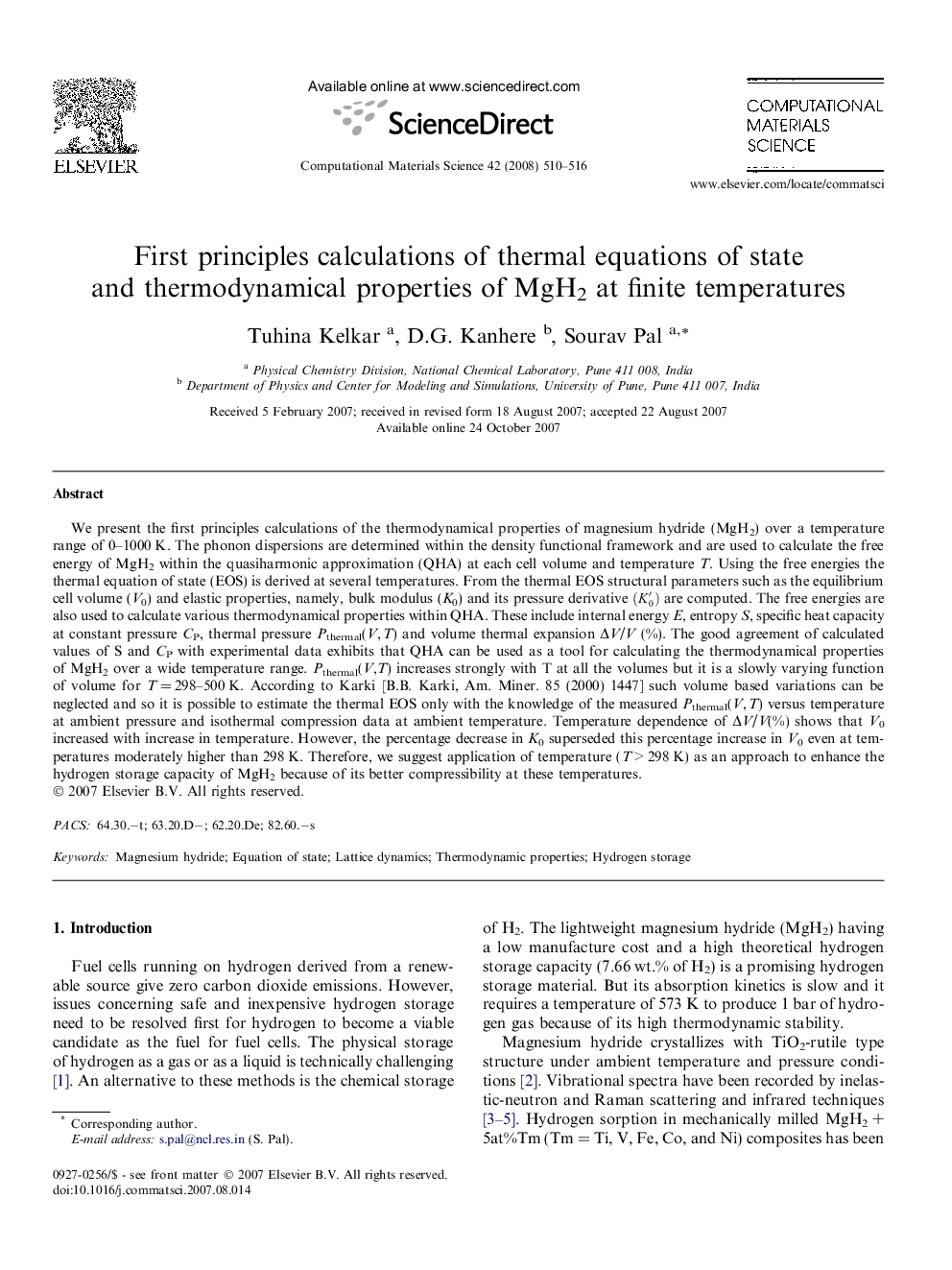| Article ID | Journal | Published Year | Pages | File Type |
|---|---|---|---|---|
| 1563946 | Computational Materials Science | 2008 | 7 Pages |
Abstract
We present the first principles calculations of the thermodynamical properties of magnesium hydride (MgH2) over a temperature range of 0-1000 K. The phonon dispersions are determined within the density functional framework and are used to calculate the free energy of MgH2 within the quasiharmonic approximation (QHA) at each cell volume and temperature T. Using the free energies the thermal equation of state (EOS) is derived at several temperatures. From the thermal EOS structural parameters such as the equilibrium cell volume (V0) and elastic properties, namely, bulk modulus (K0) and its pressure derivative (K0â²) are computed. The free energies are also used to calculate various thermodynamical properties within QHA. These include internal energy E, entropy S, specific heat capacity at constant pressure CP, thermal pressure Pthermal(V, T) and volume thermal expansion ÎV/V (%). The good agreement of calculated values of S and CP with experimental data exhibits that QHA can be used as a tool for calculating the thermodynamical properties of MgH2 over a wide temperature range. Pthermal(V,T) increases strongly with T at all the volumes but it is a slowly varying function of volume for T = 298-500 K. According to Karki [B.B. Karki, Am. Miner. 85 (2000) 1447] such volume based variations can be neglected and so it is possible to estimate the thermal EOS only with the knowledge of the measured Pthermal(V, T) versus temperature at ambient pressure and isothermal compression data at ambient temperature. Temperature dependence of ÎV/V(%) shows that V0 increased with increase in temperature. However, the percentage decrease in K0 superseded this percentage increase in V0 even at temperatures moderately higher than 298 K. Therefore, we suggest application of temperature (T > 298 K) as an approach to enhance the hydrogen storage capacity of MgH2 because of its better compressibility at these temperatures.
Keywords
Related Topics
Physical Sciences and Engineering
Engineering
Computational Mechanics
Authors
Tuhina Kelkar, D.G. Kanhere, Sourav Pal,
